Inventor of color photography. A brief history of photography
The photo
Also, a photograph or a photograph, or simply a snapshot, is called the final image obtained as a result of a photographic process and viewed by a person directly (meaning both a frame of the developed film and an image in electronic or printed form).
In a broader sense, photography is the art of taking photographs, where the main creative process is finding and choosing the composition, lighting and moment (or moments) of the photograph. This choice is determined by the skill and skill of the photographer, as well as his personal preferences and taste, which is typical for any kind of art.
Depending on the principle of operation of the light-sensitive material, it is customary to divide the photograph into three large subsections:
- Film photography is based on photographic materials in which photochemical processes take place.
- Digital photography - in the process of obtaining and storing an image, electric charges move (usually as a result of the photo effect and during further processing), but does not occur chemical reactions or movement of matter. It would be more correct to call such a photograph e, since in a number of devices traditionally referred to as "digital", analog processes take place (this is the very first camera with an electronic matrix Sony ProMavica MVC-5000, such are many cheap TV cameras of video surveillance systems).
- Electrographic and other processes in which no chemical reactions occur, but the transfer of the substance that forms the image occurs. There was no specific common name for this section until digital photography the term "silver-free photography" was often used.
The following stable phrases are also used:
Capturing moving images based on photographic principles is called cinematography.
Photography is based on the achievements of science, primarily in the field of optics, mechanics and chemistry. The development of digital photography at the present stage is mainly due to electronic and information technologies.
|
|
Operating principle
The principle of photography is based on obtaining images and fixing them using chemical and physical processes obtained using light, that is, electromagnetic waves emitted directly or reflected.
Images with the help of visible light reflected from objects were obtained in ancient times and used for painting and technical work. The method, later called orthoscopic photography, does not require serious optical devices. In those days, only small holes and, sometimes, slots were used. Images were projected onto the surfaces opposite to these holes. The method was further refined with optical instruments placed in place of the hole. This served as the basis for creating a camera that limits the resulting image from exposure to non-image-bearing light. The camera was called an obscura, the image was projected onto its back matte wall and redrawn along the contour by the artist. After the invention of methods of chemical image fixation, the camera obscura became a constructive prototype of the photographic apparatus. The name "photography" was chosen as the most euphonious of several options at the French Academy in 1839.
Photography equipment
As photography has developed, a large number of different designs and auxiliary mechanisms have been created for obtaining images. The main device is a photographic apparatus, abbreviated as "camera" or "camera", and accessories to it.
Camera
Any camera has:
- lens - an optical system that forms an optical image on a light-sensitive material;
- shutter, which determines the time during which light falls on the photosensitive material (the lens cap can play its role);
- the body, which protects the light-sensitive material from stray light during the shooting, together with the lens barrel or the objective board, the body can be used for focusing;
- a cassette with a photosensitive material (in disposable cameras it is a housing) or a photosensitive matrix with accompanying equipment;
All other elements of the camera do not directly affect the shooting process and may or may not be present in the design.
Photo accessories
In addition to the camera itself and interchangeable lenses, other photographic accessories can be used during the shooting.
Filming
- Light meter and flash meter - devices for determining the light conditions of shooting.
- Lightning equipment. Various lighting devices and reflectors are used for shooting in low light conditions. The most widespread among them are photo flashes, however, traditional lighting systems are still used in studio conditions and in cinematography.
- Studio lighting. In studio photography, special flash units are used, which are an order of magnitude more powerful than those attached to a hot shoe. There are two types of studio lighting: flash and constant lighting.
- Tripods are used to prevent blur in low light conditions, panoramas shooting, at slow shutter speeds, for installing additional lighting equipment, for multiple shots per one frame, etc.
- Light filters are used to compensate for color (conversion) and spatial (gradient) lighting deficiencies, to obtain special effects.
Processing accessories
- In digital photography, image processing programs, computers in general, and photo printers.
- In film photography - photoreagents, a tank, a photographic enlarger, a framing frame, a laboratory lamp, etc.
History of photography
1525 engraving showing a device designed by a German artist for sketching and perspective studies
The chemical prehistory of photography begins in ancient times. People have always known that the sun's rays darken human skin, sparkle opals and amethysts, spoil the taste of beer. The optical history of photography goes back about a thousand years. The very first camera obscura can be called "a room, part of which is illuminated by the sun." The 10th century Arab mathematician and scientist Algazen from Basra, who wrote about the basic principles of optics and studied the behavior of light, noticed the natural phenomenon of an inverted image. He saw this inverted image on the white walls of darkened rooms or tents set up on the sunny shores of the Persian Gulf - the image passed through a small circular hole in the wall, in the open canopy of a tent or drapery. Alhazen used a camera obscura to observe eclipses of the sun, knowing that it was harmful to look at the sun with the naked eye.
At about the same time, the Englishman William Henry Fox Talbot invented a method for obtaining a negative photographic image, which he called calotypy. Talbot used paper impregnated with silver chloride as a carrier of the image. This technology combined high quality and the ability to copy pictures (positives were printed on similar paper). The exposition lasted about an hour, the picture shows the lattice window of Talbot's house.
Types of photography
Black and white photography

Black and white photography
The practical application of tricolor photography became possible after Vogel's student, the German scientist Adolf Mite, developed sensitizers that make photographic plates sensitive to other parts of the spectrum. He also designed a three-color camera and a three-beam projector to display the resulting color images. This equipment was first demonstrated in action by Adolf Miethe in Berlin in 1902.
A great contribution to the further improvement of the method of tricolor photography was made by Sergei Prokudin-Gorsky, a student of Adolf Mite, who developed technologies that made it possible to reduce the exposure and increase the possibilities of reproducing the image. Prokudin-Gorsky also discovered in 1905 his recipe for a sensitizer that created the maximum sensitivity to the red-orange region of the spectrum, surpassing A. Mite in this respect.
Along with the method of color separation, other processes (methods) of color photography began to actively develop from the beginning of the 20th century. In particular, in 1907, the Lumiere Brothers 'Autochrome' photographic plates were patented and put on the free sale, which made it relatively easy to obtain color photographs. Despite numerous drawbacks (rapid fading of paints, fragility of plates, graininess of the image), the method quickly gained popularity and by 1935 50 million autochromic plates were produced in the world.
Alternatives to this technology only appeared in the 1930s: Agfacolor in 1932, Kodachrome in, Polaroid in.
Digital photography
Digital photography is a relatively young but popular technology that began in 1981 when Sony launched the Sony Mavica camera with a CCD that records images to disk. This device was not digital in the modern sense (an analog signal was recorded on the disk), but it made it possible to refuse from photographic film. The first full-fledged digital camera, the DCS 100, was released in 1990 by Kodak.
The principle of operation of a digital camera is to fix the light flux by a matrix and convert this information into digital form.
Nowadays, digital photography is ubiquitously replacing film in most industries.
Photography genres
Some of the contemporary genres of photography repeat the corresponding genres of painting, while some are specific only to photography.
Main genres in photography as an art
Specific types of photography
- Genre photography
- Reportage photography
- Pinhole photography
- Plein-air photography
- Underwater photography
- Sports photography
- Glass photo tile
- Street photo
- Travel photos, travel photos
- Photo story, photo story
- Photographic montage
- Fluorography
- Shadography
Some non-genre terms
Amateur photography, amateur photography - one of the types of mass amateur creativity using methods and means of photography.
In addition to taking up photography on his own, the photographer's need for growth and learning leads to the creation of photo and photo clubs.
Stock photography - buying and selling high-resolution photos.
For those who have started or are just starting do photography, the question will surely arise, how did it all begin? How the camera appeared? Where did the film come from? How did you get the photo paper? And many, many, many others no less entertaining questions... Well, in this article, I will briefly tell you how it all began. I'll tell you, brief, but no less entertaining from this, history of photography.
History is always full of drama, especially if it is a story of inventors and pioneers, or a story of great inventions. It captures the fact that a new idea appears only once, everything is like in life: “because in this drama, whether you are a fool or a king, you don’t play roles twice, only play a role once”
Well, let's get down to studying it!
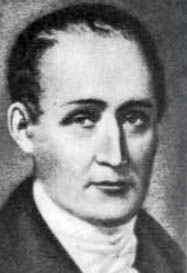
So the first and main question, as it seems to me, of all ignorant, exciting: who invented photography? It's simple - the year 1822, Joseph Nicefort Niepce (French, 1765 - 1833). He fully gave birth and substantiated the technical feasibility of recording images using light. Having done all this on the basis of their intuitive reasons.
Some historians name several inventors of photography, but this is incorrect.
The "rules of the game" are defined, Niepce's idea turned out to be very fruitful and, moreover, it so happened that it had several independent technical solutions. But these were already other inventions developing and confirming the original idea of \u200b\u200bNiepce. Of course, the merit of these inventors is also enormous. In addition, "with a light hand" Niepce inventors began to ask themselves more often the question "what else can be written down?" As a result, in addition to recording sound and movies, we know an X-ray, a cardiogram, an ultrasound picture of living tissue, an encephalogram, an X-ray and gamma tomography, etc.
PINHOLE CAMERA
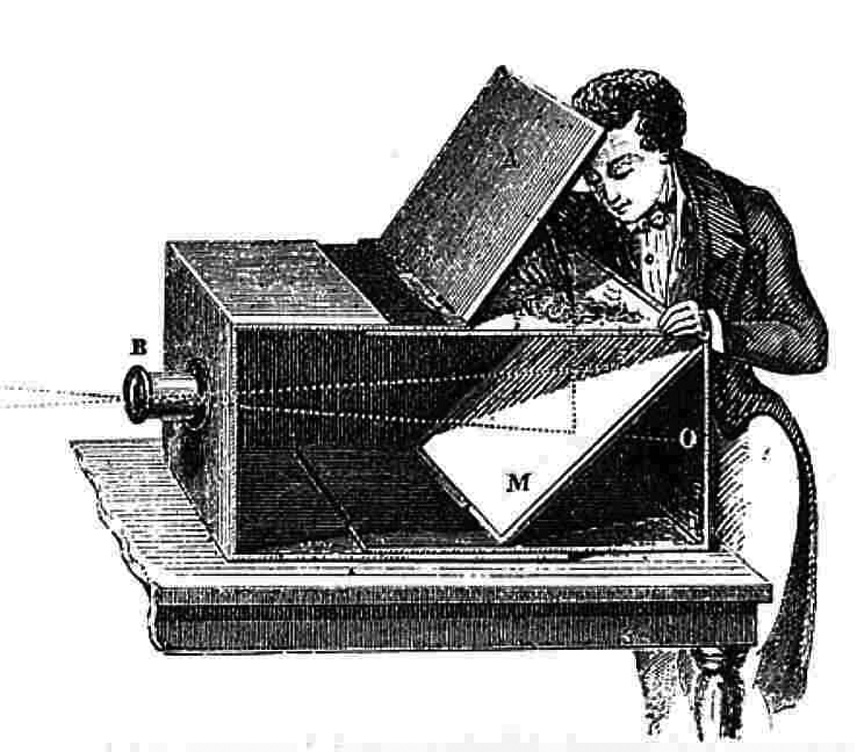
Nature reveals its secrets only when the right question is posed to it, or, as physicists say, the task is set. And so, it turns out that the correct formulation of the problem itself is often the most difficult problem, but there is no problem, there is no solution ... How, why do we see the world around us? - this question has arisen among humanity since time immemorial. The first attempts to answer it are also known. The ancient Greek philosopher Empedocles of Agrigent (~ 490 - 430 BC) believed that vision is due to the collision of special particles emitted from the eye of the observer with the surface of the observed object. Plato also agreed with this (~ 427 - 347 BC), but why do we see an object only in the presence of light and do not see it in darkness? - and Plato explains: “A particularly pure fire dwells within us, and the gods made it pour out smooth and dense particles through the eyes. These particles, merging with the light of the day, form a special body, which, due to their homogeneity, undergo everything that happens to them ... and these movements are already transmitted to the entire (light - VI) body, reaching the soul ”. Apparently he meant that such particles are effective only when mixed with their "related light of day."
Democritus of Abder (Thrace, ~ 470 or 460 BC), on the contrary, believed that "vision is due to the fall on the surface of the eye of small atoms emanating from a luminous object."
So, the above statement of the problem is evident - an obvious contradiction between the two theories of the visual process (from the eye or into the eye?), And such contradictions do not "hang in the air" forever, sooner or later there is a desperate head, which sometimes, contrary to all "established" concepts, commits a radical breakthrough in understanding the essence of the matter.
The next decisive step was taken by Abu Ali Ibn-al-Haytham of Basra (Iraq, 965 - 1039 AD). He approached the question purely empirically, as they say today, purely experimental, his problem statement sounds something like this. Let us pass rays from the observed object through a small hole. To do this, take a “black box” and make a small hole in its front wall, similar to the pupil of an eye, and make the back wall of a translucent material, for example, curtain it with a thin white cloth - a translucent screen. Then, if Plato is right, then the rays will mix and a clear image will not appear on the screen. If Democritus is right, then the rays emanating from different parts of the object will not mix, and a clear image of the object will appear on the screen. After the experiments of Abu Ali from Basra, hundreds of years passed until the same “black box” appeared in Europe - a camera obscura (dark room) and it became clear that distinct images were observed in it. So, Democritus was right. Today it is difficult to understand why Plato chose a more complex explanation.
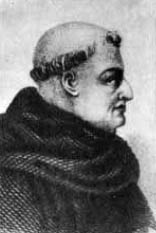
At this time in Europe (13th century AD) there were "scholarly disputes" everywhere about how many devils can fit on a needle point and other similar disputes, at the same time in Europe the Inquisition received the official right to seek recognition of heresy with the help of torture. Then ... to express heresy, i.e. the statement “unpleasant” for the church meant not only to lose everything, including life, but to lose it in the most painful way, amid the cheerful shouts of the “stupid, uncomplaining crowd,” and, moreover, to shame all his family, including descendants. However, it was then that such a desperate head was found, a Franciscan monk, Roger Bacon from Oxford (Englishman, ~ 1214-1292), who loudly declared that “the keys to comprehending the truth are not blind faith in church dogmas, but scientific experience and reason: “mathematics is the door and the key to science. She will show why the stars are shining, how the ebb and flow occur, why you can see the image in the mirrors ... ”. Bacon, a professor from Oxford, was fluent in Greek and Arabic, he read "Optics" by Abu Ali from Basra, it was he for the first time in his "Opus Mayus" who told about the camera obscura. Tragic fate Roger Bacon - this is a special chapter in the history of science, horror, experienced by everyone who only came into contact with it, and only 320 years after Bacon's death was finally published his "Opus Mayus" (Big Work). Now the camera obscura has become a very prominent event in European culture.
Already Leonardo da Vinci (1452 - 1519) considers it “quite acceptable” to redraw objects with the help of a camera obscura “through glass, transparent paper or veils”, such a redrawing was quite permissible. “If the artist is talented” and… “in order to get rid of labor to some extent and not to miss any detail in the true imitation of… the subject”. And the question involuntarily arises: is "Mona Lisa", but ... is she not "permissible" ... a child of a camera obscura? - and there is nothing in this question
reprehensible, because from the ghostly flicker on the screen of the pinhole to this mysterious masterpiece is a "huge distance."
M.V. Lomonosov (1711 - 1765) also strongly recommends that his employees use a camera obscura to image a variety of laboratory devices. Over time, the camera obscura, this prototype of the camera, finds many different uses from observing a solar eclipse to fooling believers and gullibles with “miracles” by the same ubiquitous church.
The device, meanwhile, has undergone several positive improvements: in 1812 W. Wollaston from Cambridge (Englishman, 1766 - 1828) published an important report on the use of a positive meniscus in a camera obscura - a concave-convex lens; in 1816 N. Niepce improved the obscura camera, using box-type cameras with a simple spherical lens; to increase sharpness, he invented the iris diaphragm. Well, it would seem - here it is, the camera, but no, everything is far, far from so simple ...
BROTHERS NEPS
In 1800-801, the brothers Claude and Nicefort Niepce from Chalon-sur-Saone decided to engage in invention, meaning the invention of the internal combustion engine, as well as the invention of heliography, i.e. method of obtaining an image using light. Both brothers were very talented, had a great desire to achieve success, phenomenal efficiency and did not spare either time or money, which to some extent compensated for their insufficient theoretical training (home spiritual education): such “little things” do not stop the pioneers.
The intuitive idea of \u200b\u200breplacing the steam power with some fuel fired directly in the cylinder proved to be quite fruitful, but the engine was born in a tough competition with the successful introduction of Watt's steam engine. Nevertheless, they managed to build a small operational vessel at Saint-Loup, then a vessel on the Saone River, and finally a small boat at Bercy near Paris. In 1815, the Niepce brothers received a patent for a four-stroke engine that ran on a mixture of coal dust and oil, and thus were ahead of Rudolf Diesel himself by almost 75 years. Then they found that the most efficient fuel they were looking for was oil, but these ideas and work were ahead of their time and did not find adequate support. After a series of technical and financial setbacks in 1827, Claude dies in London and Nicephorus Niepce alone continues to work on the invention of heliography.
One of useful applications camera obscura was an engraving technique that appeared in the early 15th century. At the end of the 18th century, the technology of engraving mastered etching, i.e. a method in which a copper board is first coated with a special light-sensitive varnish, and then placed in place of the screen in a camera obscura. After a sufficiently long “exposure”, the copper plate is etched and it is found that the etching rate of the varnish changes under the action of light, so that it better protects the more illuminated areas of the image from etching (apparently, the result of photopolymerization). The resulting surface relief already contains the desired (negative) image of the future engraving.
In addition, Jean Senebier, an employee of the Geneva library, found that asphalt dissolves well in turpentine, but after exposure to light, it loses this property. Nicephorus Niepce is familiar with engraving technology and tries to use asphalt as a light-sensitive substance, which is part of the varnish used in engraving. Through trial and error, after six years of continuous searching, he finally found, in 1922, that the Syrian asphalt should be dissolved in lavender oil and coated a silver plate with this compound. For the first time, the concepts of developing and flushing an image after exposure to light appear (... develop with a mixture of oil and lavender oil and then rinse well with water). In a letter to my brother dated 1824, we read: “I achieved the picture I wanted ... Images of objects are obtained with amazing clarity and accuracy, down to the smallest details with all the finest shades. Since this print is almost colorless, you can only judge the effect by looking at the plate at an angle: then the image is made visible due to shadows and light reflection. This produces almost
magical impression ”. However, the concept of pinning the image has not yet appeared. Photography was born practically on the sole enthusiasm of self-taught and without the participation of official science.
NYEPS AND DAGUER

Jacques Louis Daguerre
A few years earlier, Jacques-Louis Daguerre, a talented set designer and energetic entrepreneur, opened a new type of theater in Paris, his famous "Diarama". The novelty of the decoration technique in "Diarama" was that the scenery pictures were painted (by Daguerre himself) on a thin translucent material and were alternately changed and illuminated with special spotlights. The excellent quality of the scenery and the well-chosen repertoire of the new theater ensured the enormous success of this enterprise, including financial. However, Daguerre himself, a creative person, found it too tedious to do a large amount of stereotyped work every day, associated with the constant copying of images through a camera obscura. He had the idea of \u200b\u200bfixing the light image obtained in the camera obscura, i.e. photography idea. Since 1826. Jacques-Louis Daguerre organizes a secret laboratory in his theater to develop his own method of photography, and makes significant efforts to solve this problem, but in such matters the experience of a professional is needed, which the artist does not possess ... The meeting of the almost bankrupt Niepce with a rather wealthy Daguerre was, as it were, predetermined and in 1829. they sign an agreement on a joint project called "Heliography invented by Mr. Niepce and improved by Mr. Daguerre."
Google Ads
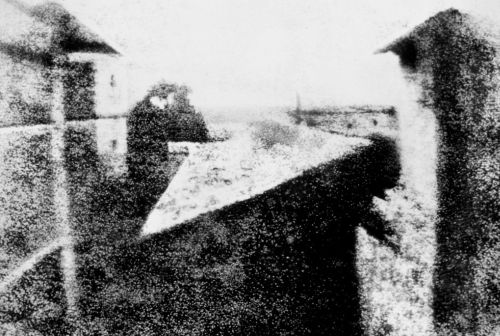
The first heliography of Niepce (1826). Courtyard view. The exposition lasted 8 hours.
At this time, Nicephore Niepce was already 64 years old, while Daguerre is more than 20 years younger than his companion. Intensive joint searches, testing, perhaps, dozens of hypotheses, and, finally, inventors stumble upon iodine, which Niepce does not really believe in, since he had already done experiments with silver halides and knows well that such an image irreversibly blackens when the plate is exposed to light ! This is perhaps the most dramatic moment in the collaboration between Niepce and Daguerre. They do not read scientific literature and simply do not know that back in 1818. the English astronomer John Herschel discovered the property of hyposulfite to stop blackening in the light of silver iodide (pinning the image!). Nicephorus Niepce died in 1833. According to the agreement between Niepce and Daguerre, Niepce's son, Isidore Niepce, remained the donor and heir to his father's business, but the young man loves only entertainment, he sells the rest of the family estate and increasingly borrows from Daguerre. Daguerre is in a hurry, his instinct suggests that there are not only successful solutions to the problem, but also competitors that are still invisible.
FOX TALBOT
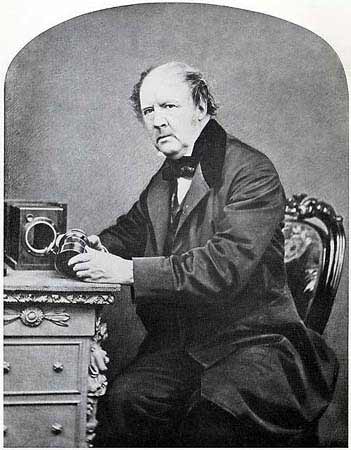
And they really do exist! This is an Englishman, Fox Talbot, a professional researcher from Cambridge, who immediately used silver nitrate, which is very sensitive to light, for photography (F. Talbot's term!). He also knows that the blackening of silver chloride in the light is perfectly blocked by ammonia. Only two years after the start of work (against the 20 - year chaotic searches of Niepce and Daguerre), in 1835, he receives a magnificent negative on glass and a photograph of his house (exposure ~ 2 hours). Photography, negative, positive, reinforcement - these are the terms that F. Talbot first used. But, having achieved this success, he suddenly quits photography and begins to study classical history. However, Talbot's only photograph is well known in history as the first high quality image. In addition to Talbot, the Englishmen Humphrey Davy (chemist and physicist, teacher of Faraday), a specialist in photography on ceramics Thomas Wedgvoort, astronomer John Herschel and others could perfectly understand this issue.
Finally, Daguerre returned to experiments with silver iodide and discovered a method for fixing a light image. Continuing to develop the idea of \u200b\u200busing "heliography" to perform stereotypical work in his Diarama, he uses a metal sheet, a plate measuring 216 * 164 cm, covers it with a thin layer of silver and places it in a box, at the bottom of which iodine powder was poured. After a short time, iodine vapors, due to the formation of light-sensitive silver iodide, colored the silver layer of the plate in a beautiful pink color. After the camera obscura exposure, development was performed. For this, a bath with mercury heated on an alcohol lamp and a developed plate were placed in another box. Mercury vapors settled on the light areas of the plate and developed an image (positive). The quality of these images was very good. Astronomer John Herschel, seeing Daguerre's “heliogravures” in 1839, exclaimed: “This is a miracle. Talbot's drawings are child's play. ” September 27, 1835.
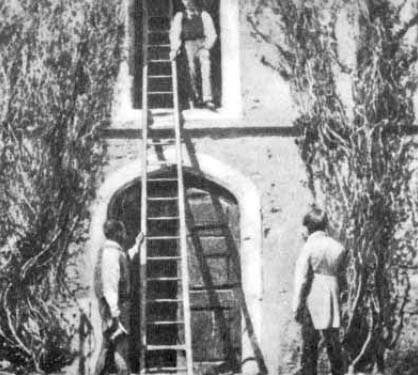
In the French newspaper L'Artist we read: “Daguerre, as they say, found a way to get an image in a camera obscura on a plate made by him. Thus, a portrait, landscape or any kind projected onto this plate in a conventional camera obscura leaves its mark on it in light and shadow and is the most perfect of all paintings. The drug applied to this image keeps it forever. "
The sensation, the noise was extraordinary, all the newspapers of that time wrote about this discovery, with such a speed and with such efficiency, perhaps, no epidemic has ever spread ... In 1838, on the streets of Paris, here and there, there appeared lightproof tents laboratory of Mr. Daguerre, where he received magnificent photographs of the historical architectural monuments of Paris. A talented actor and entrepreneur, Daguerre furnished all of his works with extraordinary mystery, and there was always a curious crowd around these tents. But ... but for Daguerre himself it was already obvious that his hopes for organizing a commercial enterprise on this basis were untenable. The whole process of “daguerreotyping” could only be carried out immediately after the exposure, it could not be classified in any way and, therefore, “privatized”. Anyone, having completed this work once, could repeat it as many times as he wants without the participation of the inventor and pass on his experience to anyone ... However ... the sun has the same property of kindness, which shines for everyone the same, and the music that sounds the same for everyone ... Well what a small commercial failure compared to such a gift to all mankind!
Let's take a look at the “Project by Joseph Nicephore Niepce and Jacques Louis Daguerre” with modern eyes. For more than a hundred years, almost half of the world's population has been willingly and voluntarily participating in this project. And ... is there a monument to these pioneers in Paris? - I don’t know, I haven’t seen ... And if not? Then ... hey, you Parisians! Isn't it time to erect a monument to these giants ???
After the discovery of Daguerre, the number of researchers and the number of improvements and discoveries in photography grew like an avalanche.
A significant contribution to the achievement of photographic technology was made by such scientists as the French F. Fizeau, A. Claude, the Hungarian J. Petzval, the Russian A. Grekov, the American S. Morse and many, many others. The daguerreotype period did not last long. The image on a silver plate was expensive, it was mirrored, it was made in one copy, it was extremely difficult to view it because of its brilliance. The calotype method had great advantages, and therefore it received further development. Already at the end of the 1840s, an inventor from the Niepce family, Niepce de Saint-Victor, replaced the negative paper substrate with glass covered with a layer of starch paste or egg white in this method. The layer was sensed to light with silver salts. In 1851 the Englishman S. Archer covered the glass with a collodion. The positives were printed on albumen paper. Photos could be reproduced. A little over two decades later, Richard Maddox proposed shooting on dry bromo-gelatin plates. This improvement made photography akin to modern photography. In 1873 G. Trout made orthochromatic plates. Later, anastigmat lenses were designed.
In 1861, the English physicist, author of the equations of classical electrodynamics, James Clerk Maxwell (1831 - 1879) obtained the first color photograph using the so-called additive method (see below). In 1889, D. Eastman (founder of the Kodak company) launched the production of celluloid films. In 1904, the first plates for color photography, issued by the Lumiere company, appeared.
That seems to be all that could be written in the page "History of photography", if not for one big and sonorous "BUT". If in 2002 there had not been an event ... extraordinary in the history of Russian color photography, in the history of Russian culture. In May 2002, the website of the US Library of Congress http://www.loc.gov/exhibits/empire/gorskii.html appeared with a description of the history of the development of color photography by Prokudin-Gorsky in Russia, which contains 122 color photographs of the highest quality from his collection. (See also www.xterra.ru and http://www.museum.ru. This site of the US Library of Congress is called “The Empire That Was Russia”, which is so reminiscent of the famous “Russia, which We lost".
A brief history of Prokudin-Gorsky's invention and the fate of its author.
Sergei Mikhailovich Prokudin-Gorsky was born in St. Petersburg in 1863. Being a chemist by training (a graduate of St. Petersburg University), he took up the development of photography, since it was this problem then, as they say, was at the very edge of science and technology. Prokudin-Gorsky had quite extensive scientific contacts with the most advanced scientists of that time, both in St. Petersburg and at universities in Europe (Berlin, Paris), but he managed to preserve his own scientific individuality and received patents for methods of creating colored slides and designing colored moving films based on their own original research.
So what happened? A chemist by profession, perfectly aware of the possible difficulties of high-quality implementation of the color photochemical process, Prokudin-Gorsky finds a physical solution to the problem (the additive method of D.K. Maxwell), which makes it possible to effectively use the (by that time already sufficiently developed) black-and-white photochemical process, i.e. .e. he uses black and white photography techniques to produce color photography! To present a photograph in color, the inventor developed a photography technique in which (ideally simultaneously) three black and white photographs (~ 70 ~70 mm) are taken, but one of three light filters is placed on the optical axis in front of each of the negatives: red, blue or green. What a wonderful synthesis of engineering and scientific outlook and entrepreneurial talent! It was a successful attempt to create the same kind sun for everyone as for Daguerre, but only in color ... Negatives appear, fix and then each of them is fixed on its “own” light filter, and the resulting three multi-colored slides are stacked with a detailed coincidence of all contours of the image. By viewing such a structure in light, or by inserting it into a projection light, a color image can be observed or an enlarged color image can be projected onto a screen (see http://www.loc.gov/exhibits/empire/gorskii.html for details).
Starting from 1905-1907, Prokudin-Gorsky formulated a Project for the application of a new technological breakthrough in the field of color photography for the systematic documentation of geography and ethnography Russian Empire... The main goal of the project was to acquaint pupils and students of Russia with the vast and varied history and culture of the Empire using the method of "optical color design". The project was supported by Nicholas II, who, by the way, was himself a rather keen amateur photographer. It is very likely that Prokudin-Gorsky had an audience with the tsar. And, perhaps, more than one ... Or, perhaps, he even had contacts with the tsar in an "informal" setting ... It is possible that partly for these reasons, the Project received the full support of the tsar and Sergei Mikhailovich had not only special permissions giving the right of access to the closed territories of Russia, but also an order for all local officials to provide the project with comprehensive assistance. It was also equipped with special auxiliary equipment, a special railway vehicle with a photographic laboratory. Prokudin-Gorsky successfully carried out the planned research in eleven regions of Russia in the period from 1907 to 1915, and according to some sources, the collection of photographs of the Russian Empire compiled by him totaled several thousand copies. The work was on the rise and was accompanied by a large number of educational lectures, which included illustrations of photographic materials received by the expedition. Everything collapsed after the October coup. According to various sources, the scientist left Russia along with the collection in 1918 - 1920, most likely immediately after the death of the royal family. He then settled in Paris, where he died in 1944.
In 1948, unique photographs of Russia at the beginning of the 20th century, captured on glass plates by Prokudin-Gorsky, were purchased from his heirs by the Library of Congress. For demonstration, glass plates were scanned into a computer and digitally transformed into color photographs with excellent color rendition using digital chromatography.
It should be noted that when discussing the issue related to such processing of Prokudin-Gorsky slides, some authors somewhat “deify” the possibilities of computer processing. However, it should be borne in mind that such processing is only able to eliminate some defects associated, for example, with the volumetric aging of the emulsion or with background precipitation on its surface, or to somewhat harmonize the color ratios. But no processing (except, perhaps, the most skillful retouching) can add any new information to the photograph, from that which was lost during photographing. In other words, color photographs of Prokudin-Gorsky are most likely magnificent in themselves, and not as a result of computer processing. Moreover, there are cases when excellent photographs were obtained from the slides of Prokudin-Gorsky without computer processing (although, in some places, a small “veil” remains).
I reread what is written above and ... if you want - believe it or not ... tears themselves dripped from my eyes ... Why ??? Why did the British, for example, forever remember the only black and white photograph of their country's son Fox Talbot (see above) and it can be found in any book on the history of photography? And why are we Russians ... Of course, Prokudin-Gorsky acted “badly”, apparently for some reason he didn’t want to be shot by the Bolsheviks, for example, “as a person especially close to the emperor” and fled without even making an attempt to shoot color photo of the proletarian leader under the red banner. And who then needed this ethnographic feast during the plague? And for this he was wiped out from everywhere, crucified, destroyed ... And it just never happened, neither himself, nor his Project, that's all! Simplicity is the sister of talent! Thanks to Ilf and Petrov, I suddenly came up with their immortal lines, something like: "Well, the wild people" - said some, "Yes ... children of the mountains!" - others echoed them, and I managed to smile through tears.
I will not call upon former students of St. Petersburg University to create a memorial plaque or monument to Prokudin-Gorsky, I have no doubt that this will happen on its own and without fail in the coming years, and a museum with photographs from his collection will certainly be organized.
Where are you, publishers of wonderful works of brilliant painters? Take a closer look, isn't it time to "give a go to this case"?
If you are interested in me, you can see some color photographs of Sergei Mikhailovich here.
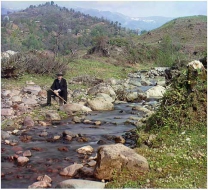
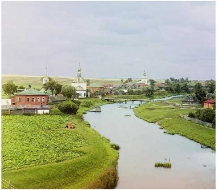

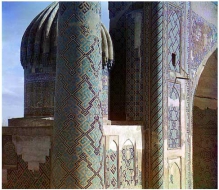


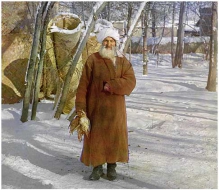


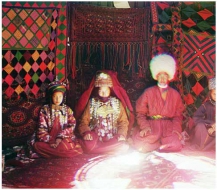
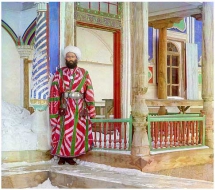
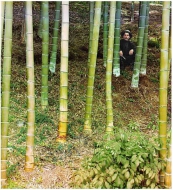


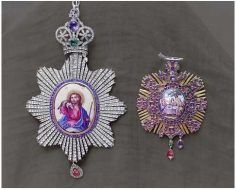
P.S.Modern digital photography is a high technology of pointillism.
Knowing the history of photography, we take a camera in our hands, this small miracle (really, through the thorns - to the stars!) With special excitement, we become co-authors of the great photographic chronicle of the Earth and our leisure is filled with a special sense of involvement in this historical process. Love photography and teach it to your children.
P.P.S. Friends, if you liked the article or became useful to you. Do me good too. Share the link to the article on your pages "Vkontakte", "Odnoklassniki", "Facebook", "Tweeter" and other pages. To do this, you just need to click the button at the bottom of the page and follow the simple steps of the instructions. I also invite you to subscribe to my mailing list, then you definitely do not miss the next, I hope interesting and useful, article. The subscription form is in the upper right corner of the page.
In life, everything has its beginning, so any science and art originate somewhere in the depths of centuries, and then develop, improve, new directions, new trends are formed. This also applies to photography, which I perceive as art, the development of which is directly related to science, I mean the development of photographic technology. This article, entitled "The History of Photography in Brief", contains the most important facts about the birth and development of the great art of photography.
It is worth starting with the main definition of photography, it comes from the ancient Greek words "light" and "I write", ie light painting is a technique of painting with light. This is the ability to create and save an image using a photosensitive material (matrix) in the camera. This is the technically correct wording. If we talk about photography as a form of art, then the definition may sound like this: the creative process of searching for and creating a theoretically correct and artistic and artistic composition, which in turn, albeit partially, is determined by vision. The term itself appeared in 1839.
History of photography in brief
In 1826, the Frenchman Joseph Nicephorus Niepce surprised many by taking the first photograph in the history of mankind, obtained using a "camera obscura" (per. Dark room) on a tin plate covered with a thin layer of Syrian asphalt. This photograph was a view from the window of Jean N. Niepce's workshop and it was created over 8 hours, continuously under direct sunlight.
Almost at the same time as Zh.N. Niepce, another Frenchman, Louis Jacques Mandé Daguerre, worked on obtaining a stable image. In 1829, having teamed up with Niepce and received all the detailed information about his previous experiments, Louis Daguerre began to actively work on improving the process. And in 1837 he succeeds and gets an image in 30 minutes, using table salt as a fixative. This method is called daguerreotype. However, unlike the method of J. Niepce, it was impossible to copy images.

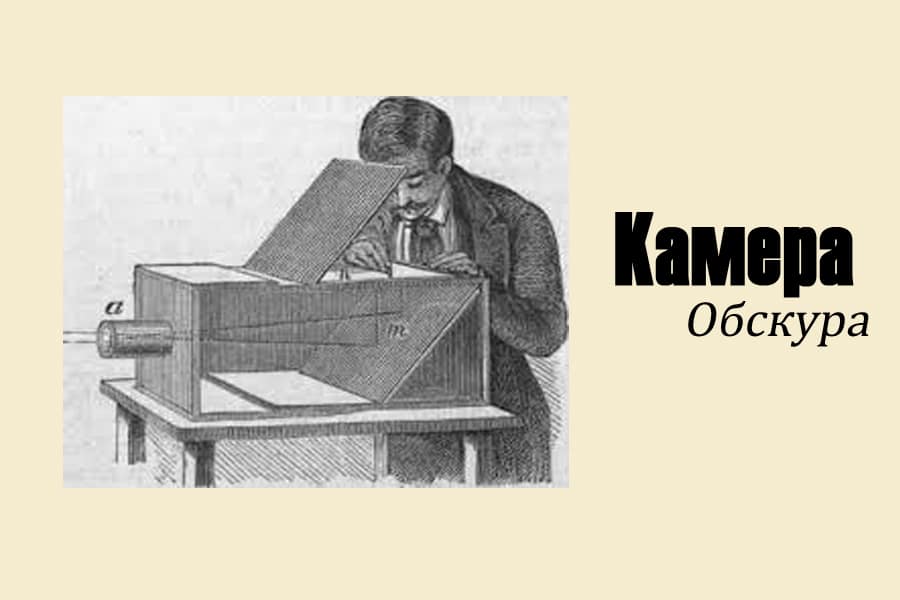
Along with the French, the Englishman William Fox Henry Talbot worked on the creation of a stable image, and in 1839 he created his own method of obtaining a negative image called calotypy (later it became known as talbotypy). The main difference between this process is the special way of preparing sensitive paper. This process has dominated the creation of both portrait and architectural images.
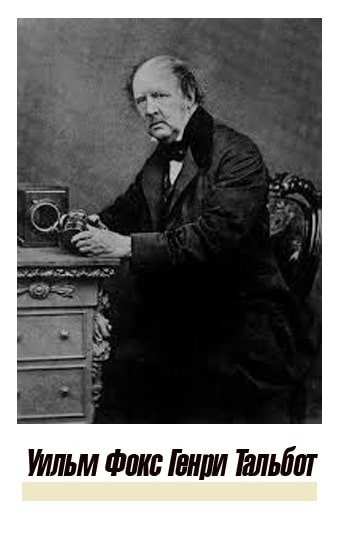
The history of the development of photography continues in 1850 ... Louis Brancard Ervar finds a new type of photographic paper - albumen, which was later used as the main one until the end of the century.
In 1851, the Frenchman Gustave Le Greux invented wax negatives, which in turn replaced the talbotype. This innovation has greatly simplified the process of creating images in nature.
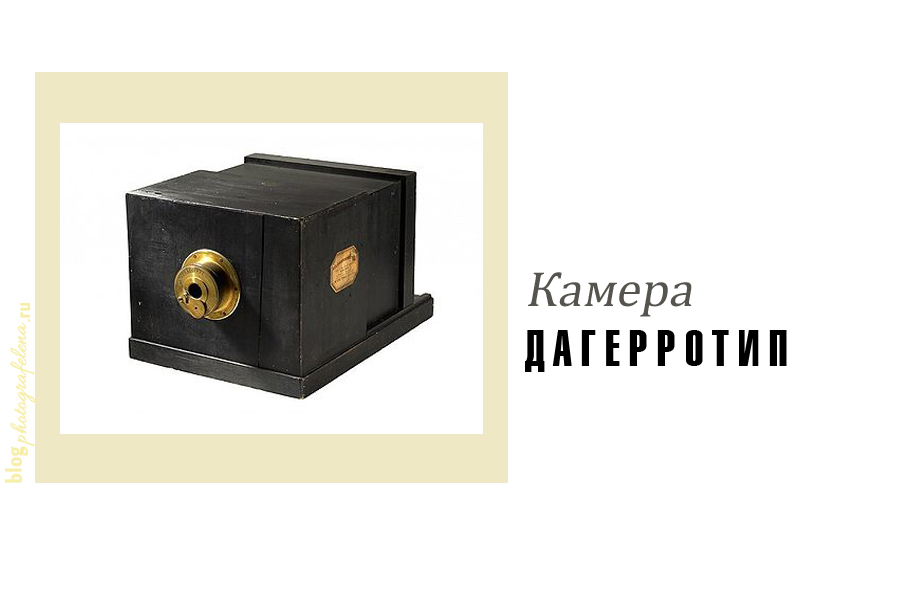
The history of photography continues in 1847, when a kind of new stage in its development begins. This year begins the era of glass negatives, Claude Felix Abel Niepce achieved the first impressive results in this process. And already in 1851, the Englishman Frederick Scott Archer developed the wet callodion process. Due to the legal insecurity of this process, it quickly became widespread and helped to increase. In 1854, the name ambrotype appears, patented in America, which was a kind of more simplified version of daguerreotype.
In 1861, the English physicist James Maxwell was the first in the world to obtain a color image, which was the result of three shots of the same subject, with different filters (red, blue and green). The wider use of color photography became possible thanks to Adolf Mieta. He invented sensitizers that make photographic plates more sensitive to other regions of the spectrum. An even greater contribution to the development of this was made by Sergei Prokudin-Gorsky, who developed technologies to reduce exposure.

Development did not stand still, from year to year scientists sought to improve the process of creating an image. So a new stage in the history of photography began in 1872, when the Englishman Richard Leach Maddox announced the creation of a dry collodion plate.
In 1876 in England an integrated approach to the study of the photographic process by W. Driffield and F. Harter began, they focused on the study of the relationship between the exposure time and the amount of silver formed in the film. In 1879, J. Swann opened the first production of special silver halide photographic paper based on gelatin, which became the main element in the production of paper for photography and is still used in industrial production today. By this time, the workers involved in the production of photographic prints were already able to slightly adjust the tonality and contrast of the image during production.
American banker George Eastman in 1880, after a trip to England, opens his own company in America under the name "Eastman Dry Records Company", which later in 1888 was renamed and registered as the KODAK company. And in the same summer, the first camera of this brand was released. 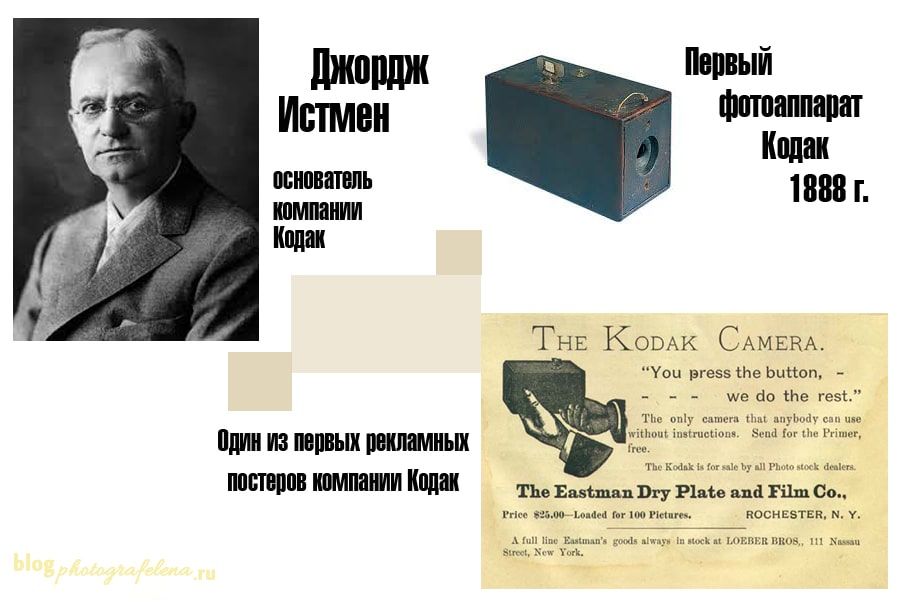
In 1869 Edward James Muybridge created one of the first camera shutters, which he used to photograph horses. In addition, he created his own photography system. In 1881, photographs of horses brought Muybridge worldwide fame.
The history of photography continues further: in 1884, D. Eastman received a patent for roller film on a paper backing and cassette, which was a great innovation in the process of photography. And already in 1888 D. Eastman received a patent for a portable camera, which housed the roller film he had patented earlier. And already in 1889 the mass production of films began.
In 1911, Oskar Barnack came to work for the German company Leitz, who made a huge contribution to the further development of photography. Thanks to his efforts and research, in 1925 goes on sale small format camera of a new type called Leica I (the name comes from the merger of the two words Leitz and Camera), which worked on standard film. Also this year, P. Vircotter secured the rights to the first flash lamp invented by him, and in 1931 G. Edgerton invented the world's first electronic flash, which naturally replaced the flash lamp. 
In 1932, the first in the world becomes public small format rangefinder camera Leica II.
Since about the 1930s. widespread color photoall thanks to Kodak, the first to release Kodachrome color reversible film. And in 1942 the company launched Kodacolor film, which became very popular among professionals and amateurs of photography.
In 1948, Polaroid made a breakthrough in photography with the Polaroid Land 95, which ushers in the era of instant photography.
![]()
In 1975, Kodak engineer Stephen Sassoon developed and introduced the first digital camera to the public. had a resolution of 0.1 mega pixel.
The growing public interest in photography demanded a more convenient model and more production, and in 1988 FUJI introduced a truly portable digital camera, the FUJI DS-1P.

These days, when even cell phones have built-in cameras capable of taking good enough photos, it can be difficult to imagine that once people spent a huge amount of time creating just one photo.
The logical result of the development of photography was its transformation into a true art. And personally, I am infinitely glad of this, that now there is more opportunity to create truly artistic, artistic photographs.
Several Yet interesting facts from the history of photography:
- Louis Dagger took a photograph in 1838, which is considered the first where a person is depicted.
- In 1839 Robert Cornelius made his first self-portrait.
- In 1858 Gaspard Turnas took the first aerial photograph of Paris.
- In 1856, William Thompson took the first underwater photograph. His camera was attached to a pole.
- In 1840, Professor John William Draper took the first successful photograph of the moon.
- In 1972, the first color photograph of our beautiful planet Earth was taken.

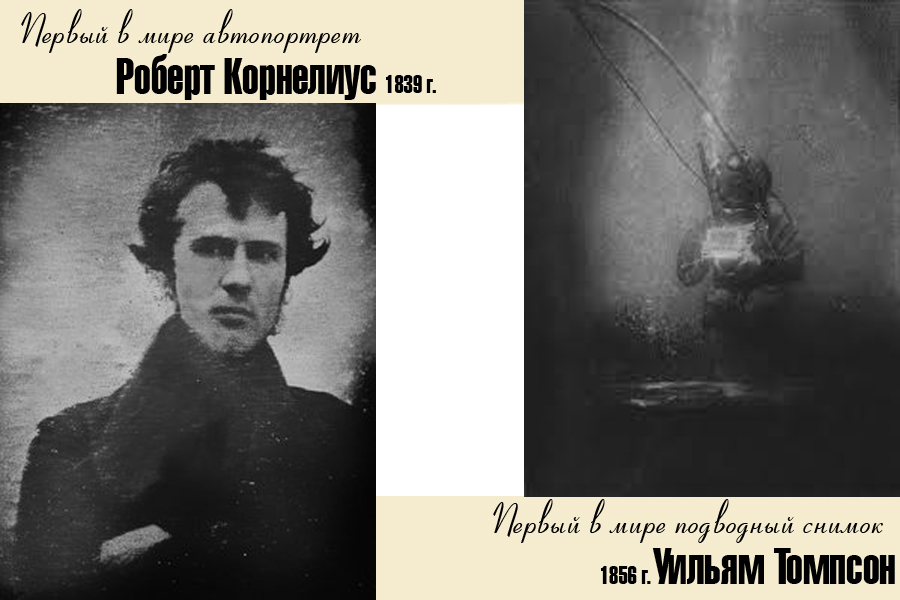

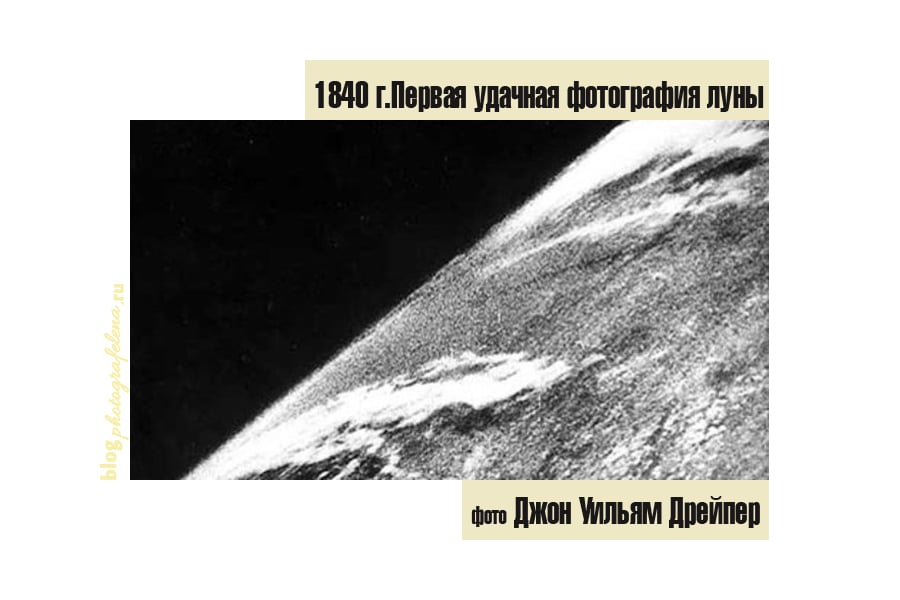
 What? Where? When? Short review
What? Where? When? Short review
The photo (French photographie from ancient Greek φως / φοτος - light and γραφω - I write) - a technique of drawing with light, light painting: obtaining and storing a static image on a photosensitive material (film or matrix) using photographic equipment, a camera.
Also, a photograph or a photograph, or a snapshot is called the final image obtained as a result of a photographic process and viewed by a person directly.
The principle of photography is based on obtaining images and fixing them using chemical and physical processes obtained with the help of light, that is, electromagnetic waves emitted directly or reflected.
Images with the help of visible light reflected from objects were obtained in ancient times and used for painting and technical work. The method, later called orthoscopic photography, does not require serious optical devices. In those days, only small holes and, sometimes, slots were used. Images were projected onto the surfaces opposite to these holes. The method was further improved with optical instruments placed in place of the hole. This served as the basis for creating a camera that limits the resulting image from exposure to non-image-bearing light. The camera was called an obscura. After the invention of the method of capturing images by several inventors, the camera obscura became the constructive prototype of the photographic apparatus. The name "photography" was chosen as the most euphonious of several options at the French Academy in 1839.
Depending on the principle of operation of the light-sensitive material, it is customary to divide the photograph into three large subsections:
Film photography is based on photographic materials in which photochemical processes take place.
Electrographic and other processes in which no chemical reactions occur, but the transfer of the substance that forms the image occurs. There is no special general name for this section; before the advent of digital photography, the term "silver-free photography" was often used.
Digital photography - in the process of obtaining and storing an image, electrical charges move (usually as a result of the photo effect and during further processing), but no chemical reactions or material movement occur. It would be more correct to call such a photo electronic, since analog processes take place in a number of devices traditionally referred to as "digital" ones.
Photography is based on the achievements of science, primarily in the field of optics, mechanics and chemistry. The development of digital photography at the present stage is mainly due to electronic and information technologies.
History of creation and pioneers
The first fixed image was taken in 1822 by the Frenchman Joseph Nicphore Niepce, but it has not survived to this day. Therefore, the first photograph in history is considered to be the "view from the window" taken by Niepce in 1826 with the help of a camera obscura on a tin plate covered with a thin layer of asphalt. The exposure lasted eight hours in bright sunlight. The advantage of the Niepce method was that the image was embossed (after etching the asphalt), and it could be easily reproduced in any number of copies.
In 1839, Frenchman Louis-Jacques Daguerre published a method of obtaining an image on a copper plate covered with silver. After a thirty-minute exposure, Daguerre transferred the plate to a dark room and held it for some time over the heated mercury vapor. Daguerre used table salt as a fixer for the image. The image turned out to be of a fairly high quality - well-developed details in both highlights and shadows, but copying the image was impossible. Daguerre called his method of obtaining a photographic image daguerreotype.
At about the same time, the Englishman William Henry Fox Talbot invented a method for obtaining a negative photographic image, which he called calotypy. Talbot used paper impregnated with silver chloride as a carrier of the image. This technology combined high quality and the ability to copy images (positives were printed on similar paper). The exposition lasted about an hour, the picture shows the lattice window of Talbot's house.
Applications of photography and its meaning,
Technical documentary photography, historical significance
The invention and widespread use of photography, and later cinematography, changed the idea of \u200b\u200bhistorical events recorded on film, no less than the invention of writing.
Legislation, judicial and investigative practice
The use of photography, both film and digital (and now the development of methods for recognizing and processing images), made it possible to fundamentally change the activities of the investigating authorities, made a number of already developed judicial norms more objective and made it possible to develop new ones based on documentary properties and functions of photography, on her ability to objectively capture the image of an event.
Astronomy, microscopy, nuclear physics, biology, cartography
In these areas, the use of photography has led to a tremendous leap in the objectivity of the results obtained, expanding opportunities and accelerating research. Astronomers' shift from observation to long exposure photography has completely changed this science and the space available for exploration.
X-ray
A type of study of the internal structure of objects that are projected using X-rays onto a special film or paper. It is most often used in medicine to diagnose various organs for fractures, diseases, etc.
Photolithography and related technological processes
It was photography and related processes that allowed the development of the electronics industry, made the current world semiconductor and "digital".
Bibliography:
1. Russell Hart Photography For Dummies \u003d Photography For Dummies. - 2nd ed. - M .: "Dialectics", 2007. - P. 368. - ISBN 0-7645-4116-1
2. Rosalind Kraus. Reinventing the Means: A History of Photography // Blue Sofa. N 3.M., 2003, p. 105-127
3. Photo cinematography. Encyclopedia. Chief editor EA Iofis, M., "Soviet Encyclopedia", 1981. Article "History of photography". Author P.A. Nogin.